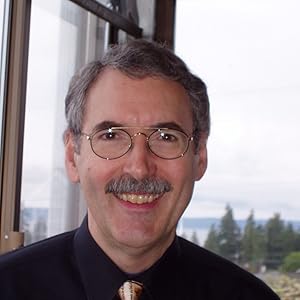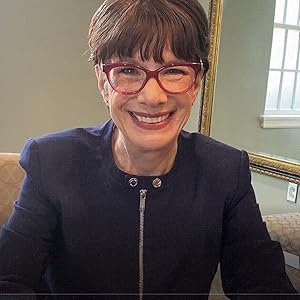Maurice E Vellacott
关于作者
Maurice E. Vellacott was a pastor for 14 years and a Canadian MP for almost 2 decades. He holds a BCM (Nipawin Bible College), BRE (Briercrest College), MDiv (CTS/Ambrose University), DMin (Trinity International University), Graduate Teacher Diploma (Evangelical Training Association), and a PhD (NT) from North-West University (Potchefstroom, ZA). He’s done courses through Jerusalem University College and doctoral work at Dallas Theological Seminary. He’s an Associate Instructor with Walk Thru The Bible. AUTHOR MAURICE E. VELLACOTT'S ACKNOWLEDGEMENTS Although one person’s name appears as the author on the title page, others have contributed to this work lasting over several years. I first express my gratitude to my gracious Redeemer and Lord, who gave me this important project to keep me occupied before, and in the aftermath of, tragically losing our first-born, 42-year-old, married son, Chad Maury Vellacott, to the dread mental health illness of schizophrenia. I long for the day when I will hold him in my arms again at that glad reunion in the Lord’s presence. This project has engaged my mind and been a God-given, positive relief amid this long, dark night of my soul. I also pay tribute to my dad and mom, Ed and Mary Vellacott, who were great encouragers of me and my five siblings. I am grateful for dad and mom having come to know Jesus, the Messiah, as their Savior and Lord and helping me know that sin separated me from my Creator, but because of Jesus’ death and resurrection I could be reconciled to God. As humble folk, they modelled what it was like to be spiritually “born again,” which spurred me on to walk that same path of service to God and others. I also look forward to reuniting with them in heaven or on earth in the days ahead. I am eternally grateful to my dad for having pointed me to Nipawin Bible College. I am indebted to Nipawin Bible College faculty, staff and students there in the 1970s, who challenged my thinking and provided the seedbed for everything I did thereafter, as a Pastor, college teacher, Canadian federal Member of Parliament, and whatever else God has in store for me in my remaining days on this earth. Briercrest College, Canadian Theological Seminary, Trinity International University (T.E.D.S.), Dallas Theological Seminary, and Jerusalem University College have also played important roles in shaping me. I thank my dear wife, Mary, whom I met at Nipawin Bible College, who has supported me, challenged me, and shown a keen interest in these studies. I have much appreciated those engaging discussions with her on this research of mine and her sharing with me all that she is learning through her weekly Bible Study Fellowship International program. In addition to being a diligent student of the Bible, Mary has also been a much appreciated, meticulous proofreader of this manuscript. I would be remiss if I did not express my heart-felt appreciation to my promoter and North-West University professor, Dr. Philip Du Toit, who patiently and professionally guided me through the PhD thesis on which this book is based. He was firm in direction and a good resource person in view of his considerable knowledge in the New Testament and expertise in the Greek. I am also grateful to my Wipf and Stock book editor, Dr. Robin Parry, from Worcester in the UK, who has been accommodating and had good advice along the way in preparation of this manuscript for typesetting and publication. Wipf and Stock Managing Editor Matt Wimer, Assistant Managing Editor Emily Callihan, Editorial Administrative Assistant George Callihan, and typesetter Ian Creeger have all been helpful and encouraging at different points in the process. In the final phase, Dr. Savanah N. Landerholm used her expertise in copyediting, typesetting, and design to prepare a final product that is attractive and more readable. I dedicate this work to my family, and in particular to my living children, Lisa (spouse Paul), Josh, and Jay, and daughter-in-law, Melissa, as well as my grandchildren, with the prayer that they too will be diligent students of the Word to the honor and glory of the coming King of Kings and Lord of Lords. PREFACE to "The Earliest View of New Testament Tongues" As a student of church history, Dr. Vellacott was aware that in the last 145 years, the 1 Corinthians 14 phrase “speaking in tongues” and the underlying Greek terms γλῶσσα (glṓssa singular) or γλῶσσαι (glṓssai plural) have been a subject of considerable debate. Some would understand those Greek terms to mean “language” or “languages” in the sense of miraculously endowed, earthly languages. Others hold that these terms mean ecstatic or non-ecstatic languages in the non-normative, non-earthly sense, as particularly promoted by those of Pentecostal and Charismatic persuasion. The intriguing question for Dr. Vellacott was: which is the more appropriate intent of the Greek text in 1 Corinthians 14 or is there a viable third explanation of normally acquired languages? As a result, is there a present-day practice of “tongues” which finds support from this passage? After five years of diligent research, Dr. Vellacott concluded that there is considerable merit to the interpretation of early church father, the Jewish Bishop Epiphanius, who wrote that the γλῶσσαι/glṓssai conflict in the first-century AD assembly of believers at Corinth involved different dialects of Greek (Attic-Ionic, Aeolic and Doric Greek) with inconsiderate congregants using the Hebrew language and the aforementioned Greek dialects in their assemblies without translation. With diglossia existing among first-century Judeans, Dr. Vellacott concurs that it was a key factor in understanding what was meant by “other tongues” in Acts 2:4. “Among first-century Judeans, the religious language, 'leshon ha-kodesh' ['holy language'], Hebrew, was the language that both Palestinian and Diaspora Judeans expected to hear in the Temple liturgy, during the feast of Pentecost” (Zerhusen, 1995:126). “Instead of 'leshon ha-kodesh,' the disciples of Jesus, inspired by the Holy Spirit, began speaking in ‘other tongues’ (i.e., languages other than Hebrew). The speakers spoke Aramaic and Greek, languages they knew, languages that were simultaneously the native languages of the crowd assembled in Acts 2” (Zerhusen, 1995:126). TABLE OF CONTENTS CHAPTER 1 INTRODUCTION 1.1 Subject background 1.2 Personal background 1.3 State of research 1.3.1 Insufficient scope of research 1.4 Problem statement 1.5 Aim and objectives 1.5.1 Aim 1.5.2 Objectives 1.6 Central theoretical argument CHAPTER 2 LINGUISTIC ANALYSIS OF γλῶσσα/γλῶσσαι (glṓssa/glṓssai) 2.1 Hebrew 2.2 Greek 2.3 Conclusions CHAPTER 3 CULTURAL ANALYSIS 3.1 Roman perspective—the “Way” as a sect of Judaism 3.2 Jewish influence bearing on the Corinthian Assembly 3.2.1 Paul’s Hebraistic upbringing and training 3.2.1.1 Many quotations from the Older Testament 3.2.2 Aquila and Priscilla—Jewish co-workers from Rome 3.2.3 Apollos—an Alexandrian Jew 3.2.4 Silas, Timothy—circumcised Jews, troubleshooters, Paul’s protégés 3.2.5 Peter— of the Jerusalem mother assembly 3.2.6 Judaizing Christians referred to in 2 Corinthians 3.3 Synagogue influence on Corinthian Assembly 3.3.1 Origin of Corinthian Congregation 3.3.1.1 Synagogue ruler Crispus and his entire household 3.3.1.2 “A worshipper of God” Titius Justus 3.3.2 Composition of Corinthian congregation 3.4 Aramaic influence on Corinthian Assembly 3.5 Greek influence on Corinthian Assembly 3.6 Roman Influence on Corinthian Assembly 3.7 Delphine Oracle influence on Corinthian Assembly 3.8 Low literacy influence on Corinthian Assembly 3.9 Conclusions CHAPTER 4 HISTORICAL ANALYSIS OF "LANGUAGE/LANGUAGES" 4.1 Post-Apostolic time until 1516 AD 4.1.1 Post-Apostolic time until 500 AD Clement of Rome, Irenaeus, Montanism, Tertullian, Novatian, Origen, Epiphanius, Pachomius, Hilary of Poitiers, Filastrii/Filastrius, Ambrosiaster, Gregory of Nazianzus, Ambrose, Chrysostom, Severian of Gabala, Jerome, Augustine of Hippo, Cyril of Alexandria, Pope Leo I the Great, Theodoret of Cyrrhus 4.1.2 500 AD until 1000 AD 4.1.3 1000 AD until 1516 AD Michael Psellos, Hildegard of Bingen, Thomas Aquinas 4.2 Reformation period (1517-1648 AD) Francis Xavier, Martin Luther, John Calvin 4.3 Post-Reformation (1649-1905 AD) Quakers, Shakers and Ranters, French Huguenot Protestants, Catholic Jansenists, Moravians, Edward Irving, Mormons (LDS) 4.4 Modern period—Azusa until Third Wave (1906-1980 AD) 4.5 Present time (1980ff AD) 4.6 Conclusions CHAPTER 5 CONTEXTUAL AND EXEGETICAL ANALYSIS OF γλῶσσαι (glṓssai) 5.1 Contextual/Exegetical Analysis of Acts 2 event (Jerusalem Jewish recipients) 5.2 Contextual/Exegetical Analysis of Acts 10 event (Caesarea Gentile recipients) 5.3 Contextual/Exegetical Analysis of Acts 19 event (Ephesus Diaspora recipients) 5.4 Contextual and Exegetical Analysis of 1 Corinthians 14 5.4.1 Contextual Analysis of 1 Corinthians 14 5.4.2 Exegetical Analysis of 1 Corinthians 14 5.5 Conclusions CHAPTER 6 TRANSLATION ANALYSIS OF ANY SHIFT IN MEANING 6.1 Wyclif Bible translation of “languages/tongues” (1380 AD) 6.2 Tyndale Bible translation of “languages/tongues” (1535 AD) 6.3 Cranmer Bible translation of “languages/tongues” (1540 AD) 6.4 Geneva Bible translation of “languages/tongues” (1562 AD) 6.5 Rheims Bible translation of “languages/tongues” (1582 AD) 6.6 Bishop’s Bible translation of “languages/tongues” (1568/1602 AD) 6.7 Authorised (KJV) Bible translation of “languages/tongues” (1611/1873 AD) 6.8 Luther’s translation of “languages/tongues” (1483-1546 AD) 6.9 Calvin’s translation of “languages/tongues” (1509-1564 AD) 7.0 Conclusions CHAPTER 7 SUMMARY, FINDINGS, CONCLUSIONS CHAPTER 8 CONTRIBUTION AND RECOMMENDATIONS BIBLIOGRAPHY
阅读完整简历







